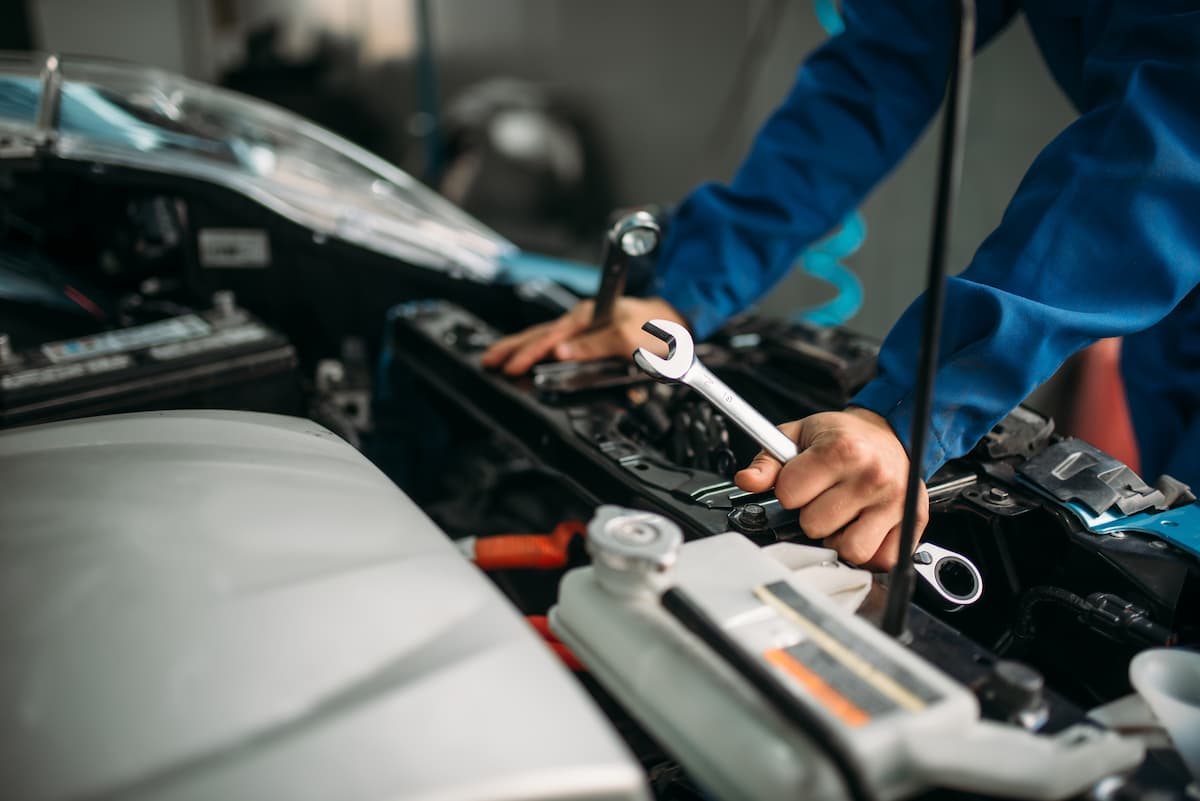Table of Contents
What is Tire Pressure Monitoring System (TPMS)?
A Tire Pressure Monitoring System (TPMS) is an electronic system that monitors the air pressure inside your tires and alerts you when it falls below the recommended level. It provides real-time information to help you maintain optimal tire pressure, ensuring the safety and performance of your vehicle.
There are two main types of TPMS systems:
- Direct TPMS: This system uses sensors inside each tire to measure the air pressure and send the data to the vehicle’s onboard computer. If the pressure drops below a certain threshold, the system triggers a warning light on the dashboard.
- Indirect TPMS: This system does not use sensors inside the tires. Instead, it uses the vehicle’s ABS (Anti-lock Braking System) or wheel-speed sensors to monitor the rotation speed of the tires. If a tire is underinflated, it will rotate at a different speed than the others, triggering a warning light.
Why is TPMS Important?
TPMS is a crucial component for both safety and vehicle performance. Here are the key reasons why it’s important to monitor tire pressure:
1. Safety
Maintaining proper automotivegreen.com is directly linked to road safety. Underinflated tires are more prone to overheating, which can lead to tire blowouts or loss of control of the vehicle. Overinflated tires, on the other hand, may reduce traction and increase the risk of hydroplaning in wet conditions.
By alerting drivers to low tire pressure, TPMS reduces the risk of accidents caused by tire failure and helps improve overall vehicle safety.
2. Fuel Efficiency
Tires that are underinflated create more rolling resistance, which means the engine has to work harder to move the vehicle. This results in increased fuel consumption. According to the U.S. Department of Energy, underinflated tires can reduce fuel efficiency by up to 3%. By maintaining optimal tire pressure, you can improve your vehicle’s gas mileage and reduce fuel costs.
3. Tire Longevity
Properly inflated tires last longer because they experience less wear and tear. Underinflated tires tend to wear out faster on the edges, while overinflated tires may experience excessive wear in the center of the tread. TPMS helps ensure that your tires maintain the correct pressure, leading to longer-lasting tires and fewer replacements.
4. Improved Handling and Performance
Proper tire pressure ensures better handling, braking, and stability. Underinflated tires can reduce grip on the road, leading to poor handling and increased braking distances. Overinflated tires can make the vehicle feel stiff, reducing comfort and traction. TPMS helps maintain optimal tire pressure for smooth driving performance.
How to Use Tire Pressure Monitoring System
Using the TPMS system in your vehicle is relatively straightforward, as the system typically alerts you when tire pressure is low. Here’s what to do if your TPMS light comes on:
1. Check the TPMS Warning Light
The TPMS light will illuminate on the dashboard if any of your tires are underinflated. The light may be accompanied by an exclamation mark or a symbol that resembles a horseshoe with an exclamation point inside it. In some cases, the light may blink, indicating a more serious issue.
2. Check Tire Pressure
If the TPMS light comes on, the first step is to check the air pressure in your tires using a tire pressure gauge. Make sure to check the pressure when the tires are cold, as driving heats up the tires and can lead to inaccurate readings. The recommended tire pressure for your vehicle can usually be found in the owner’s manual or on a sticker located on the driver’s side door frame.
3. Inflate or Deflate Tires
If any tire is underinflated, use an air compressor to inflate it to the recommended pressure. If a tire is overinflated, you can release some air by pressing on the valve stem until it reaches the correct pressure.
4. Reset the TPMS (If Necessary)
In some cases, after adjusting the tire pressure, the TPMS light may need to be manually reset. To do this, refer to your vehicle’s owner’s manual for the specific procedure. In many vehicles, you can reset the TPMS by turning the ignition key to the “ON” position (without starting the engine) and holding down the TPMS reset button until the light blinks three times.
5. Monitor Tire Pressure Regularly
Even though your vehicle has a TPMS, it’s still important to check tire pressure regularly, especially before long trips. TPMS is a great tool, but it’s not a substitute for regular tire maintenance. If you notice that the TPMS light frequently comes on, it could indicate a slow leak or another issue that requires further inspection.
What to Do If the TPMS Light Keeps Flashing
If the TPMS light continues to flash or stays on even after inflating the tires to the correct pressure, it could indicate a problem with the system itself. Here’s what to do:
1. Check for Tire Leaks
If the TPMS light comes on and remains on after you’ve checked and corrected the tire pressure, it could indicate a slow leak in one of the tires. Inspect each tire for visible punctures or other issues, such as nails or debris embedded in the tread.
2. Inspect the TPMS Sensors
If the tires appear to be fine but the light stays on, it could be a problem with one or more of the TPMS sensors. These sensors are powered by batteries, which typically last between 5 to 10 years. If the sensor battery is dead, it will need to be replaced.
3. Take Your Vehicle to a Professional
If you’re unable to resolve the issue yourself, it’s best to take your vehicle to a certified mechanic or dealership. They can diagnose the problem, whether it’s a faulty sensor, a tire issue, or another underlying cause.
Tips for Maintaining Proper Tire Pressure
To ensure your tires remain in optimal condition and the TPMS system functions properly, consider these tips:
- Check Tire Pressure Monthly: Even with TPMS, it’s a good idea to manually check your tire pressure at least once a month to ensure it’s within the recommended range.
- Inspect Tires Regularly: Look for signs of damage, such as cuts, bulges, or punctures. If you notice anything unusual, have the tire inspected or replaced.
- Avoid Overloading Your Vehicle: Excess weight in your vehicle can cause the tires to lose pressure more quickly, so make sure you’re not exceeding your car’s weight limits.
- Rotate Tires Regularly: Rotating your tires every 6,000 to 8,000 miles helps ensure even wear and extends the lifespan of your tires.
- Replace Worn Tires: If your tires are bald or have low tread depth, replace them to maintain optimal traction and safety.
Conclusion
Tire pressure monitoring systems (TPMS) are an invaluable tool for maintaining the safety, efficiency, and performance of your vehicle. By keeping an eye on your tire pressure and responding quickly to any alerts, you can avoid costly repairs, enhance fuel efficiency, and improve driving safety. While TPMS makes it easier to monitor tire pressure, regular tire maintenance, including manual checks, is essential to ensure your tires are always in top condition. Keep your tires properly inflated, and your vehicle will perform better, last longer, and keep you safer on the road.



